
Sgraffito Storytelling
Tanya Crane MA’14, MFA’15 revolutionizes an ancient engraving technique to explore personal histories.
Sgraffito, Italian for “to scratch,” is a technique typically applied to pottery in which an outer layer of material is scratched away to reveal another layer beneath it. It can also be applied to enamel, which is how jewelry artist and metalsmith Tanya Crane MA’14, MFA’15 incorporates it into her practice.
Crane is a professor of the practice in metals at the School of the Museum of Fine Arts at Tufts University. Her unique take on sgraffito lends her work a meticulous level of detail and a mesmerizing clarity in design that, along with her pedagogy, earned her a 2024 United States Artists Fellowship.
Sgraffito is a fitting technique for an artist whose body of work chronicles memories and the passage of time. As a sharp tool gradually reveals a concealed layer and, eventually, a complete design, the stories embedded in Crane’s art slowly come into focus.
“I’m really interested in the stories [of the Great Migration] and particularly my family’s story,” she says. “I’m also interested in these old buildings that surround me [in Boston]: the remnants of the textile industry and the detritus that they’ve left behind.”
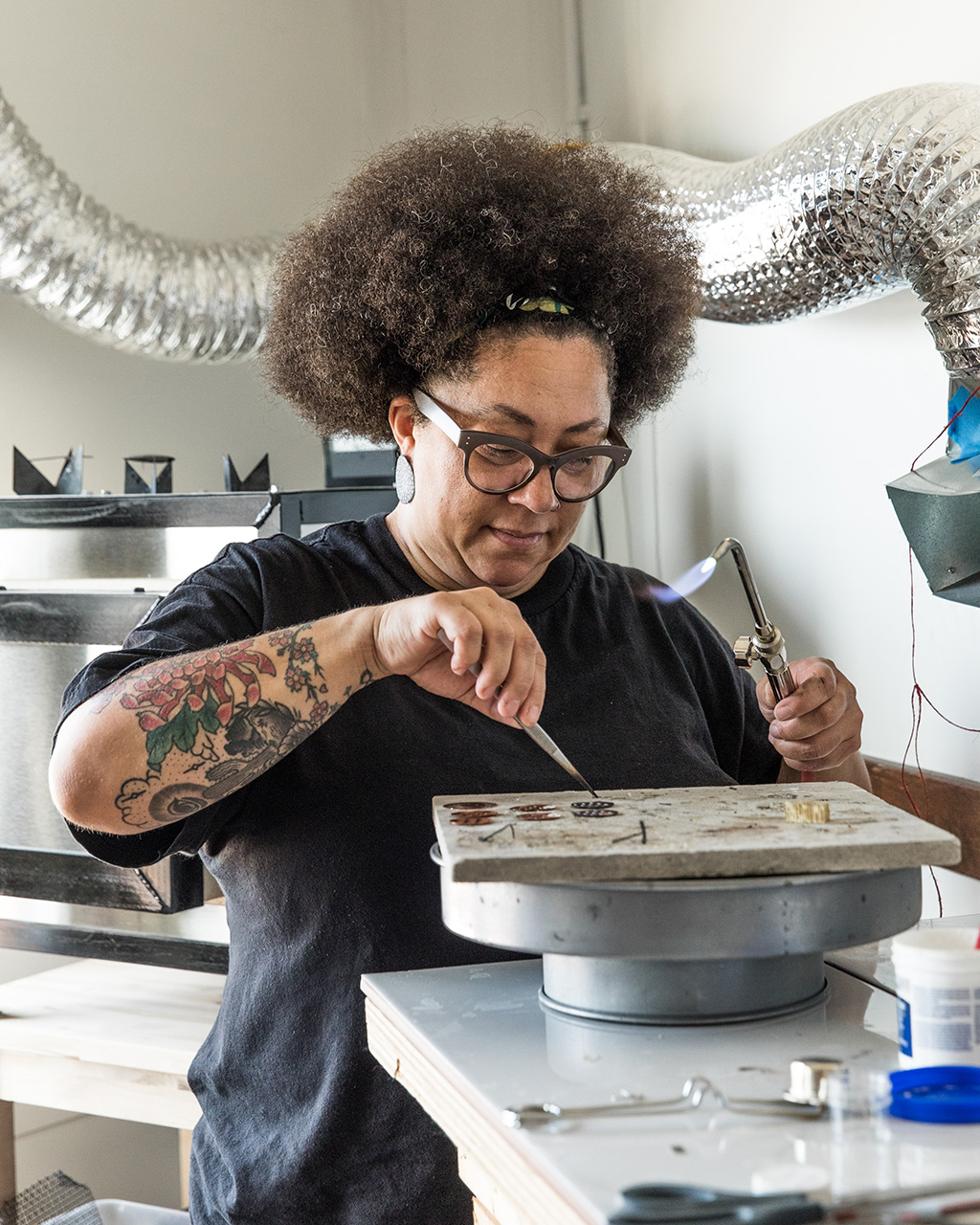
Crane’s work chronicles memory and the passage of time. Greta Rybus
Her work also considers the concept of home. Crane currently resides in Rhode Island, the latest stop in her own sgraffito-like movement across the country that started with an artistic childhood in Los Angeles and took her to Seattle, New York, Wisconsin, and now New England, her path gradually revealing itself.
Here are just a few of the stories she’s soldered into museum-worthy memory.
Statement Piece
The word jewelry often brings to mind wedding rings, dainty necklaces, and other precious ornaments that fall into the category of “fine jewelry.” The pieces that Crane creates are notably bolder than these delicate objects.
“When you go to a university to learn jewelry, you’re going because you want to make small sculpture,” she says. “Everything I make is a sculpture … and all the sculptures speak about the body. They speak about adornment, about being worn, and about the viewership of jewelry.”
As a graduate student under the mentorship of UW art professor Lisa Gralnick, Crane crafted statement pieces: necklaces that are intentionally large and attention-grabbing. Perhaps none makes a bigger statement than Big Pimpin’ (2014), a pendant comprising five 24-karat-gold-plated, enameled medallions suspended on a thick, gold-plated chain. The medallions are coated in black-over-white enamel, and each is etched with a unique sgraffito design. Crane notes that the piece was inspired by both the adornment of ancient African kings and the necklaces, or “bling bling,” worn by contemporary celebrities to connote wealth and status.
“That is maybe the most pivotal piece in my oeuvre,” Crane says. “It encompasses my history, it encompasses my research, and it encompasses the lineage of my journey through making.”
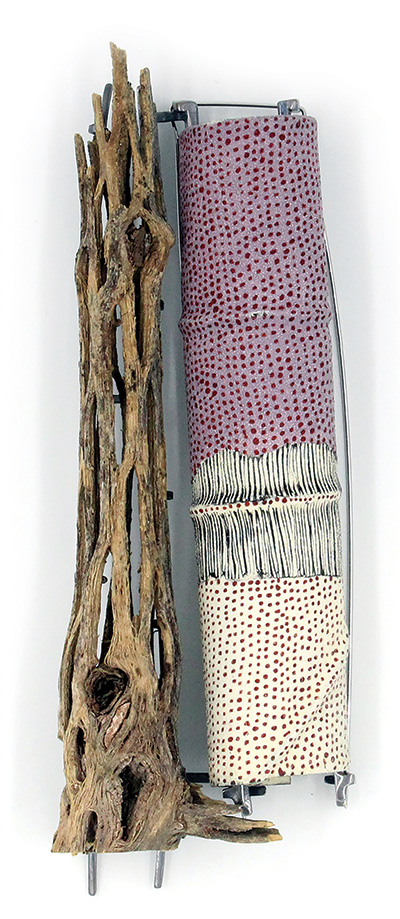
A mesmerizing clarity in design: Crème de Violette (2020) pairs cholla bark with an enameled copper form. Courtesy of Tanya Crane
Cocktail Hour
Crane’s work often involves etching, but not all her stories are concealed beneath an outer layer. Growing up as a mixed-race child in the 1970s and 1980s, Crane split her time between her mother’s home in a predominantly white Los Angeles suburb and visits with her father in the city’s more diverse neighborhoods. The divide was obvious, but her place in it was not.
“You always feel like you’re not Black enough or you’re not white enough,” Crane says. “You’re told that.”
In her work, she captures these stark contrasts and the liminal space in which she exists by pairing natural materials, like stones, with handmade ones, like her enameled forms.
“Elementally, these materials are the same,” Crane says. “Enamel is glass. There’s glass in stone, so there’s crossover, but when you look at the surface of these two items, they look totally different.”
This juxtaposition is evident in pieces like Crème de Violette (2020) and The Pink Squirrel (2020), brooches that combine cholla bark and driftwood, respectively, with a tapered, enameled tube.
“I like to pair things to kind of ask, how do we exist?” she says. “Where are the similarities? Where are the differences?”
As for the cocktail-oriented naming conventions for these brooches: “I’m thinking of them as works that could bring people together,” she says, “and we come together over drinks.”
Miguel’s Story
A rare departure from her focus on jewelry, Crane’s most personal piece is a vessel that captures a personal history.
Miguel’s Story (2023) is a copper bowl coated in black-over-white enamel. The outside of the bowl features a series of tally marks; the inside bears the text of an interview conducted with her father’s brother, Miguel, which she transcribed in sgraffito.
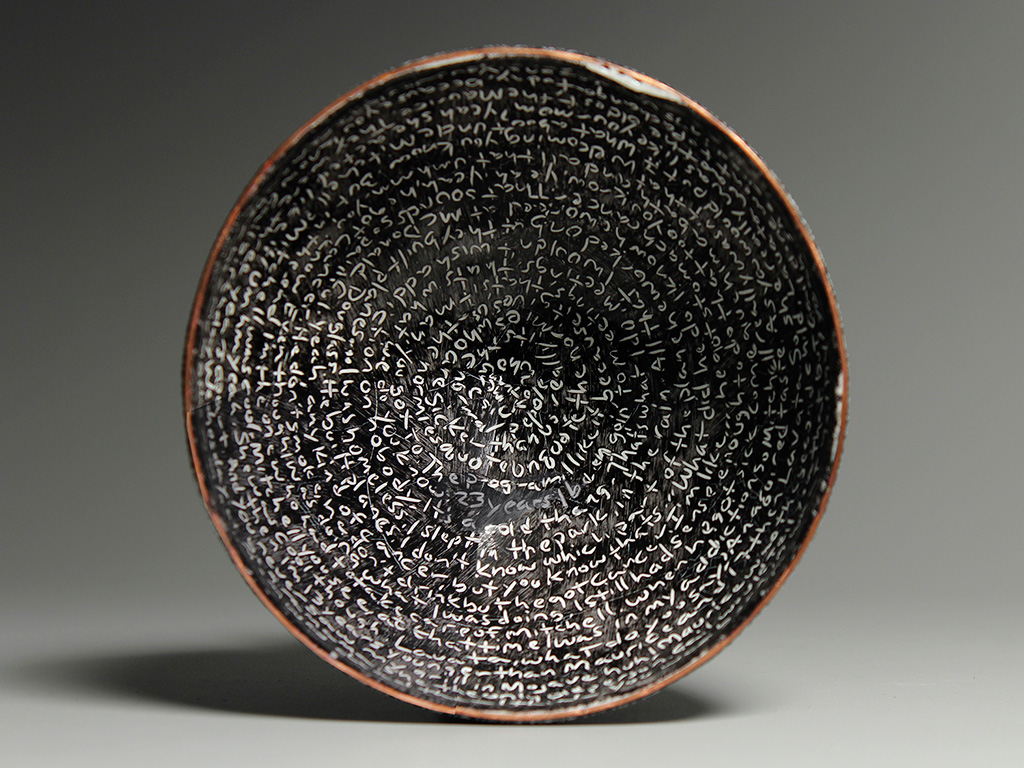
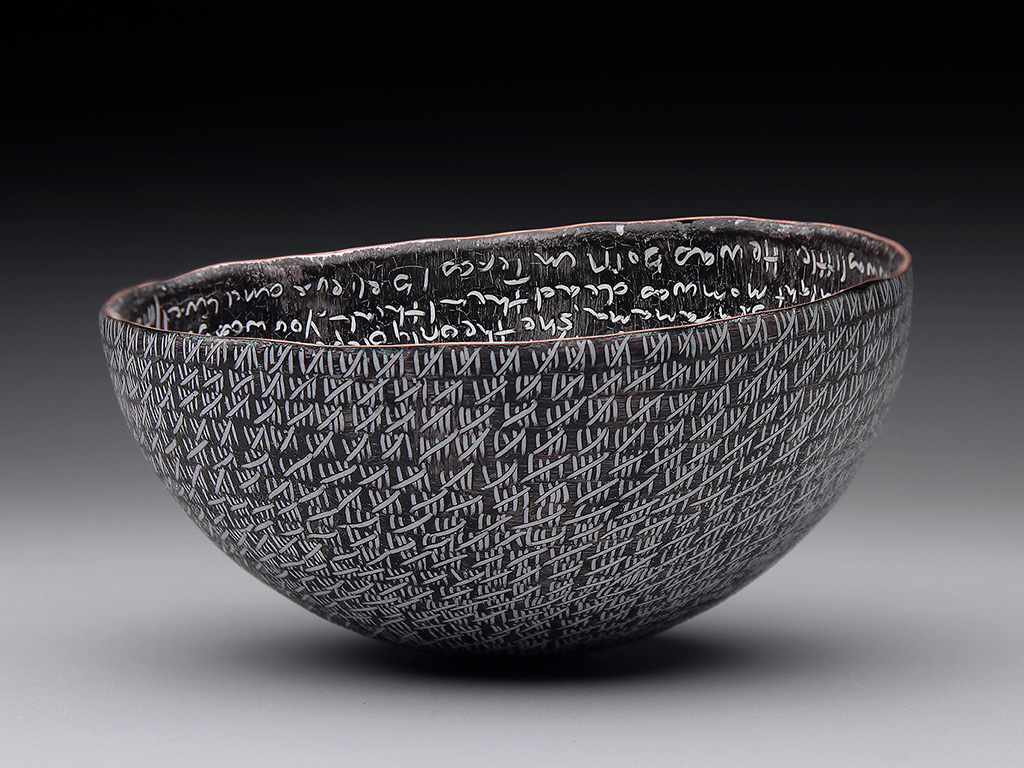
Miguel’s Story (2023) includes the text of an interview Crane conducted with her father’s brother, which she transcribed in sgraffito. Courtesy of Tanya Crane
“My father passed away in the ’80s — he had ALS — and I was born in the ’70s, so I only know little snippets of his story,” Crane says. By interviewing his brother and sister — some of his last living relatives — Crane evokes a more complete picture of a man she didn’t get a chance to know. She hopes to tie her family’s stories to those of the Second Great Migration, the period from the 1940s through the 1970s that brought so many Black settlers to the American West and that influences the region to this day.
Miguel’s Story is part of the Enamel Arts Foundation Collection in the Museum of Fine Arts, Boston. (Crane gifted the proceeds to Miguel when the piece was purchased.) But perhaps her most intimate piece — and her most unconventional — has yet to be put on public display.
What’s His Worth (2023) is a vintage men’s urinal coated with black-on-white enamel and a gold-leafed interior. The enameled surface features the same sgraffito tally-mark design as Miguel’s Story.
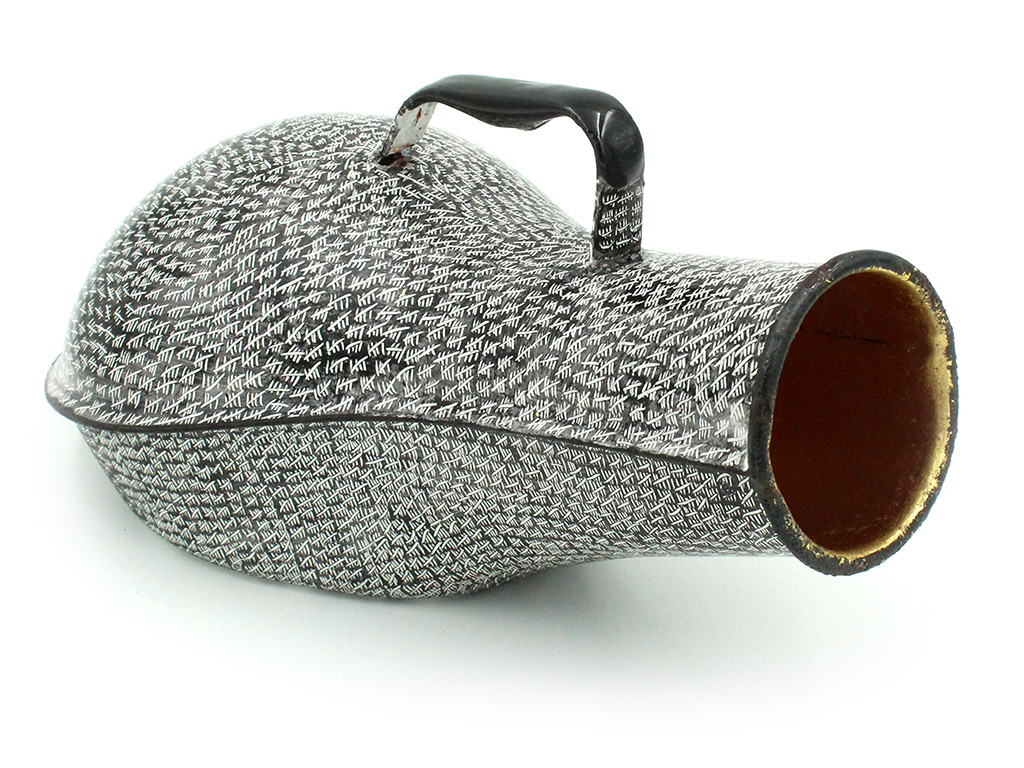
What’s His Worth (2023) is Crane’s most intimate and unconventional piece. Courtesy of Tanya Crane
“Because my dad had ALS, I knew him as being paralyzed,” Crane says. “He had needed assistance with everything, and until maybe the ’80s, all the things in hospitals were made out of enamel.”
When Crane found the urinal in a Wisconsin antique store, she wasn’t quite sure what to do with it, but as her family’s story has revealed itself over time, it became an appropriate artifact on which to preserve a history that she continues to uncover. •
Megan Provost '20 is a staff writer for On Wisconsin.
Published in the Summer 2024 issue
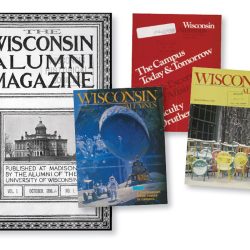
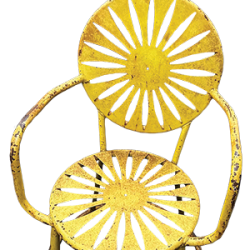

Comments
No comments posted yet.